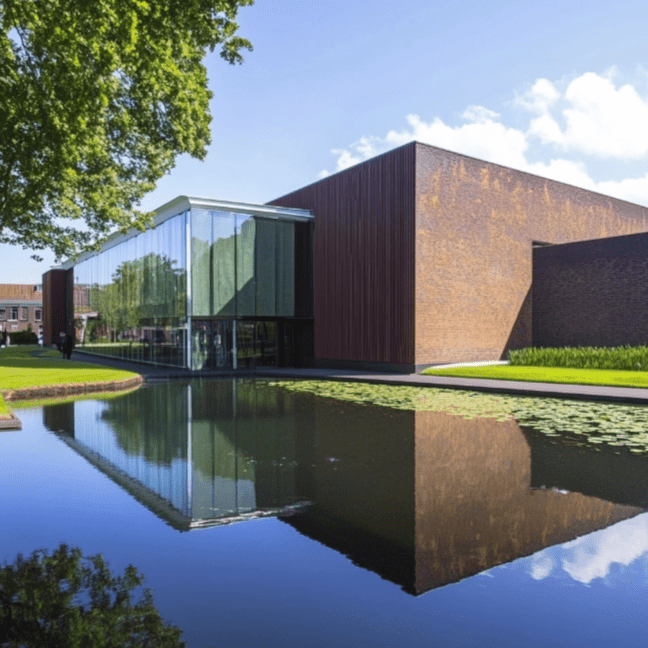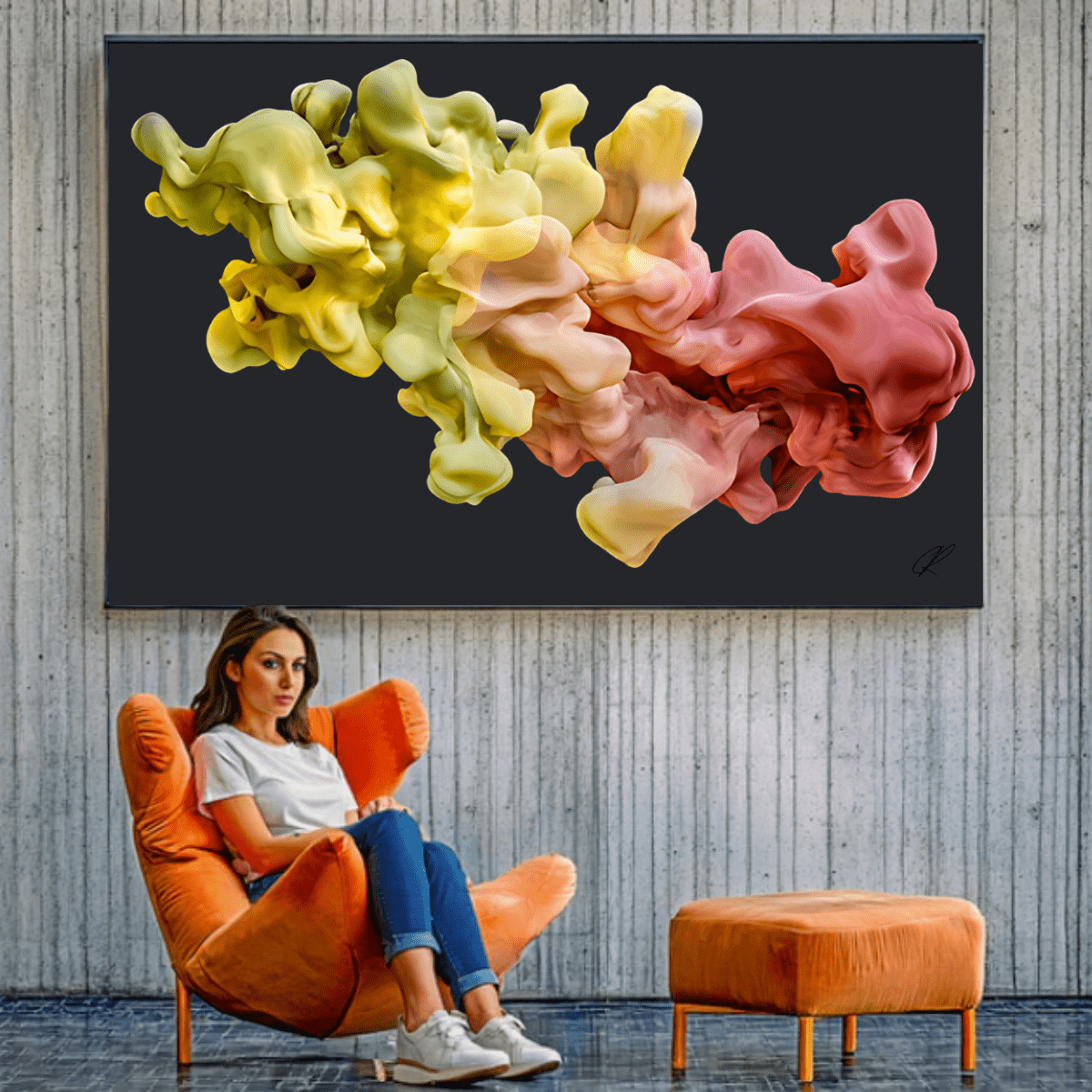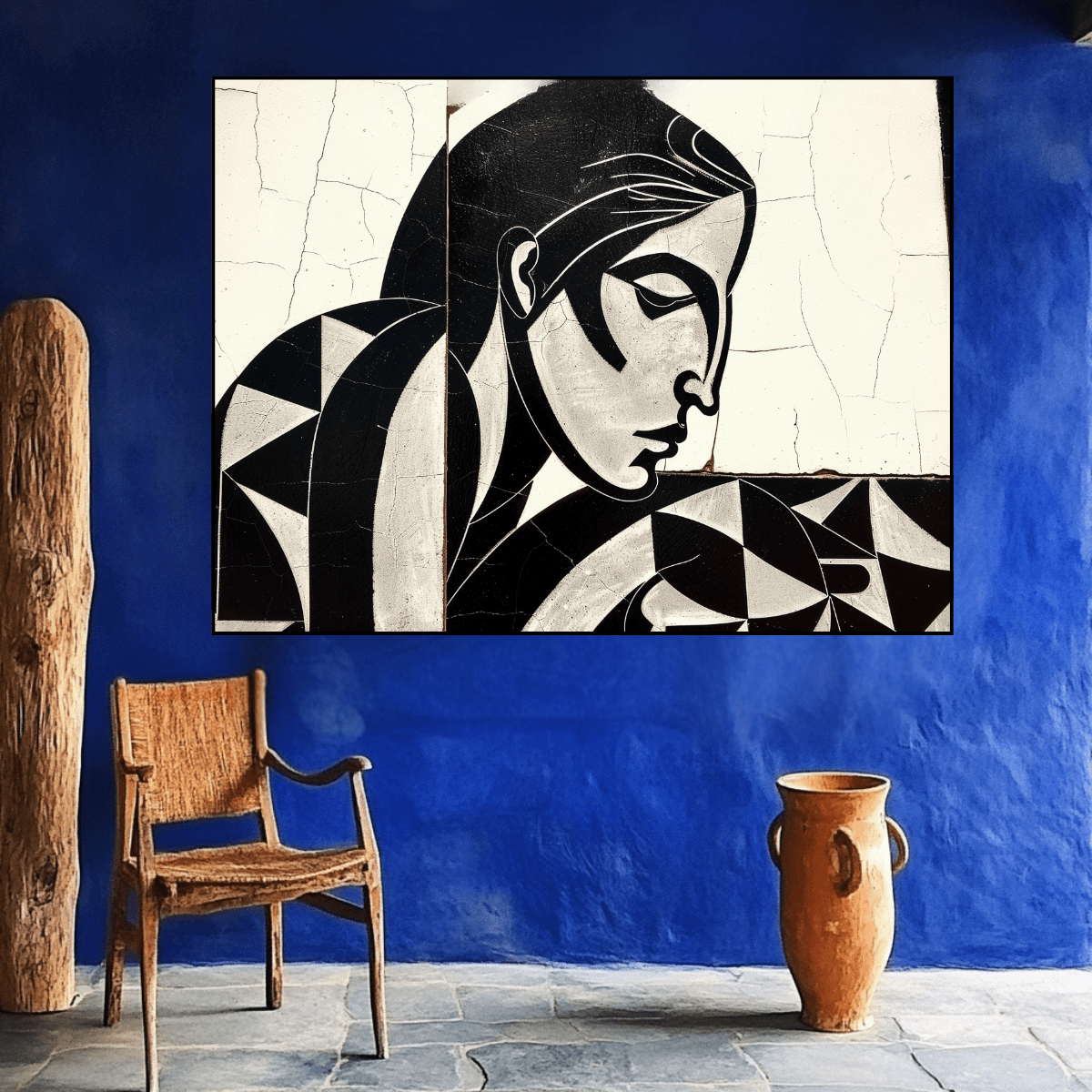Discover 6 Modern Art Styles You Need to Know

Imagine if the art on your walls could share stories more complex than just pictures. Modern art movements have changed how we see creativity. They push past old limits and bring new ways to see the world through art.
The late 19th century marked a big change in art. Artists like Paul Cézanne and Georges Seurat brought new styles. Their work showed a big shift in how we think about art.
Artists back then wanted to go beyond just showing things. They used new ways to express feelings and thoughts. Their work changed how we see and understand art.
Key Takeaways
- Modern art movements challenged traditional artistic representations
- Contemporary art emerged as a dynamic, revolutionary form of expression
- Artists explored innovative techniques beyond realistic depiction
- Visual culture underwent significant transformation
- Emotional and psychological dimensions became central to artistic creation
The Evolution of Modern Art: A Historical Perspective
Art history changed a lot in the late 19th and early 20th centuries. A big change came from cultural shifts. These changes made artists see and show the world in new ways.
The fast growth of industry and social changes helped spark new art. Artists started to break free from old rules. They wanted to find new ways to share deep human feelings.
Origins of Artistic Transformation
The start of modern art came from a few important things:
- New tech made old ways of seeing art seem old-fashioned.
- Big cities gave artists new views of life.
- Studies on how we see things led to new ideas.
Cultural Shifts and Artistic Expression
Artists found new ways to express themselves as society changed. Impressionism was a big step forward. It used bright colors and new brushstrokes to catch quick moments.
Claude Monet's "Impression, Sunrise" was a key work. It showed a new way of seeing art.
Pioneering Voices of Change
Artists like Pablo Picasso, Henri Matisse, and Salvador Dalí changed art forever. They brought new ideas that made people think differently about art.
"Every act of creation is first an act of destruction." - Pablo Picasso
These artists made art a strong voice for change. They used it to talk about big issues and explore their own feelings.
Understanding the Foundations of Modern Art Movements
https://www.youtube.com/watch?v=WdEpb0y2WI4
Modern art was a big change from old ways of making art. Artists started using new techniques that made people see art differently. They moved away from just copying what they saw.
The base of modern art was built on a few main ideas:
- Rejection of realistic representation
- Emphasis on emotional and psychological experiences
- Experimentation with color, form, and composition
- Breaking traditional artistic boundaries
Artists like Pablo Picasso and Henri Matisse led the way with new ideas. They showed that art could mean more than just what we see. Cubism broke images into shapes, and Fauvism used bright colors to stir feelings.
These changes in art matched big changes in the world. Wars, new tech, and social changes made artists think differently. They wanted to tell deeper stories through their art.
These new ways of making art changed how we see art today. Artists turned paintings into windows into our feelings. They made us see art in a whole new way.
6 Modern Art Styles That Revolutionized Visual Culture
The 20th century changed how we see art, pushing past old limits and changing visual culture. Modern artists were key, breaking free from old rules and introducing new styles. These styles changed how we create forever.
Each art movement had its own way of seeing and showing human life. These styles not only changed how art was made but also showed deep changes in society and culture.
Characteristics of Revolutionary Art Movements
The most important modern art styles had some key traits:
- They rejected old artistic ways
- They focused on feelings and thoughts
- They explored new views and experiences
- They broke old rules of showing things
Key Art Movements That Transformed Visual Culture
Six art styles stood out during this time:
- Abstract Expressionism: Known for its bold, spontaneous brushwork
- Surrealism: It looked at the subconscious and dreams
- Minimalism: It was all about simplicity and clean lines
- Pop Art: It used images from popular culture
- Cubism: It broke subjects into geometric shapes
- Street Art: It used public spaces for messages
Impact on Modern Artistic Expression
These art movements changed how we think about creativity. They made us see beyond what we knew before. Modern artists showed us new ways to express complex feelings, making art more open and bold than ever.
Impressionism: Capturing Light and Spontaneity

Impressionist painters changed the art world by how they saw and painted scenes. They didn't focus on every detail like old painters did. Instead, they aimed to catch the essence of a moment.
The movement started in the late 19th century. It focused on three main things:
- Plein air painting - creating artwork directly outdoors
- Capturing transient light effects
- Using loose, spontaneous brushstrokes
"To paint is to capture a fleeting moment in time." - Claude Monet
Artists like Claude Monet and Pierre-Auguste Renoir broke the mold. They moved away from studio work. They painted landscapes and scenes outside. Their new way of painting focused on the immediate visual impression, not just a photo.
Impressionist painting is known for:
- Vibrant, pure color palettes
- Visible brushwork
- Emphasis on light effects
- Scenes from everyday life
Their bold techniques opened doors for future art styles. They showed that art could be about feeling and seeing, not just realism.
Post-Impressionism: Beyond Visual Reality
Post-Impressionist art was a new movement that changed how we see art. Artists wanted to show more than what we can see with our eyes.
This movement was known for its unique qualities. It changed the art world by focusing on feelings and symbols, not just what we see.
Emotional Expression Through Color
Color was a key tool for artists to share their feelings. Vincent van Gogh used bright colors and bold strokes to show his inner world. His paintings became a way to share his personal experiences.
- Bold color palettes replaced naturalistic representations
- Emotional depth took precedence over visual accuracy
- Artists explored psychological landscapes through pigment
Symbolic Representations
Post-Impressionist artists thought art could be more than just pictures. They added hidden meanings to their work. They used symbols to share spiritual and psychological ideas.
Key Artists and Masterpieces
Some artists were key to this movement:
- Vincent van Gogh: Known for emotionally charged paintings like Starry Night
- Paul Gauguin: Created symbolic works exploring cultural narratives
- Paul Cézanne: Pioneered structural approaches that influenced future art movements
These artists opened doors for 20th-century art. They made us see art as more than just pictures. They invited us to explore deeper feelings and ideas.
Expressionism and Fauvism: The Power of Emotion
The early 20th century saw a big change in art with Expressionism and the Fauvist movement. These styles changed how art was made, focusing more on feelings than on being realistic.
Fauvism, a movement from 1905 to 1910, was a bold challenge to old painting ways. Henri Matisse, its leader, used bright colors to show strong emotions.
- Artists used intense, unnatural colors to show feelings
- Bright, expressive brushstrokes replaced old ways of painting
- Feeling became more important than being accurate
Expressionism went even deeper into feelings. Artists like Egon Schiele and Ernst Ludwig Kirchner made art that showed inner struggles. They used distorted forms and big lines.
Key traits of these movements were:
- Not using realistic colors
- Focusing on personal feelings
- Using dynamic, new brushwork
Both Expressionism and Fauvism greatly influenced modern art. They showed that art can express deep emotions. This opened the door for future avant-garde movements.
Cubism and Abstract Art: Breaking Traditional Forms
The 20th century saw a big change in art, with Cubism leading the way. This movement, started by Pablo Picasso and Georges Braque around 1907, changed how we see reality.
Cubism brought a new way to see and show art. It broke old rules and made art more abstract. Artists started breaking objects into shapes, showing many sides at once.
Geometric Shapes and Multiple Perspectives
Cubism's big idea was a new way to see things. Artists did this by:
- Breaking objects into shapes
- Showing many sides at once
- Changing how we see space
- Focusing on ideas, not just what's real
Revolutionary Techniques
Cubist artists used new ways to make art. Analytical Cubism broke down objects into shapes. Synthetic Cubism added collage and bright colors.
Impact on Modern Design
Cubism's influence went beyond painting. It changed architecture, sculpture, and graphic design. It also inspired Futurism, Constructivism, and Art Deco.
Surrealism: Exploring the Subconscious Mind

Surrealism started as a new art movement after World War I in Europe. It broke away from old art rules and explored the human mind deeply. Artists turned dreams into powerful images.
The movement was inspired by Freud's ideas about the unconscious. It used art to show the hidden parts of human life.
- Explored the boundary between reality and imagination
- Utilized techniques like automatic drawing
- Challenged societal perceptions of rationality
Artists like Salvador Dalí and René Magritte made artworks that made people think differently. Their paintings took viewers into dream worlds where nothing made sense.
| Artist | Signature Technique | Notable Work |
|---|---|---|
| Salvador Dalí | Dreamscape Imagery | The Persistence of Memory |
| René Magritte | Symbolic Juxtaposition | The Son of Man |
| Max Ernst | Automatic Drawing | The Elephant Celebes |
Surrealism was more than just art; it was a deep thinking movement. It made us see things differently by embracing the strange and the hidden. These artists changed how we think about creativity and life.
Conclusion: The Lasting Impact of Modern Art Movements
Modern art has changed how we see art, leaving a lasting mark on our culture. From Impressionism to Abstract Expressionism, each movement pushed the limits of art. These styles have deeply influenced today's art world.
Artists like Picasso, Dalí, and Matisse changed how we view art. They broke rules, starting a global talk about creativity and feelings. Now, we see art in new ways, looking for deeper meanings.
Art in the 20th century showed that it's more than just pictures. It's a way to talk about society and personal feelings. Artists like Banksy and Yoko Ono kept pushing what art can do. Their work shows art's power to change how we see the world.
Looking back, we see that modern art does more than create beauty. It starts conversations, challenges our views, and connects us through new ways of seeing. Art's evolution keeps creativity alive in our culture.
Enhance Your Space with Unique Modern Masterpieces by Rossetti Art .
Are you inspired by the innovative mediums and conceptual depth highlighted in our exploration of contemporary art? You’re not alone! Today’s art enthusiasts are seeking cultural relevance and emotional connections in their artwork. However, finding pieces that resonate with modern themes and fit your unique style can be a challenge. That’s where we come in!
At Rossetti Art, we specialize in canvas prints, original paintings, and modern sculptures that celebrate the spirit of now. Each piece created by Chiara Rossetti brings a personal touch that connects deeply with current social narratives—just like the modern masterpieces discussed in the article. Don’t miss out on the chance to elevate your home decor with breathtaking artwork that speaks to your values and aesthetic. Explore our collection today and find your perfect piece! Act now, and transform your space into a gallery of inspiration!
FAQ
What defines modern art?
Modern art breaks away from old ways of making art. It uses new techniques and shows feelings in a unique way. It started in the late 1800s and went to the mid-1900s. It's all about seeing things differently and trying new things.
Why is Impressionism considered a revolutionary art movement?
Impressionism changed art by painting outside. Artists like Claude Monet and Pierre-Auguste Renoir captured light and atmosphere. They used bold colors and loose strokes to show what they saw right then.
How did Cubism change our understanding of visual representation?
Cubism, by Picasso and Braque, showed many sides of an object at once. It broke things down into shapes. This new way of seeing things led to abstract art.
What makes Surrealism unique among modern art movements?
Surrealism looks into the subconscious mind. It creates dreamlike images that question reality. Artists like Salvador Dalí used automatic drawing to explore the unconscious.
How did modern art reflect societal changes?
Modern art was a response to big changes in society. The industrial revolution, wars, and new ideas in psychology influenced artists. They used their art to show new ways of seeing the world.
What is the difference between Expressionism and Fauvism?
Both focus on feelings over what's real. Fauvism, led by Henri Matisse, uses bright colors. Expressionism, led by Edvard Munch, uses intense colors and shapes to show feelings.
Are modern art styles still relevant today?
Yes! Modern art still shapes art, design, and culture today. Its ideas of innovation and emotion are seen in many areas.
How can someone begin understanding modern art?
Start by learning about key artists and movements. Visit museums and read about art history. Try to understand the artist's feelings and new techniques.
What materials did modern artists experiment with?
Modern artists tried new things like collage and found objects. Pablo Picasso and Marcel Duchamp used these new materials in their work.
How did technology influence modern art movements?
New tech like photography and industrial materials changed art. They let artists try new things and see the world in new ways.









Leave a comment
This site is protected by hCaptcha and the hCaptcha Privacy Policy and Terms of Service apply.